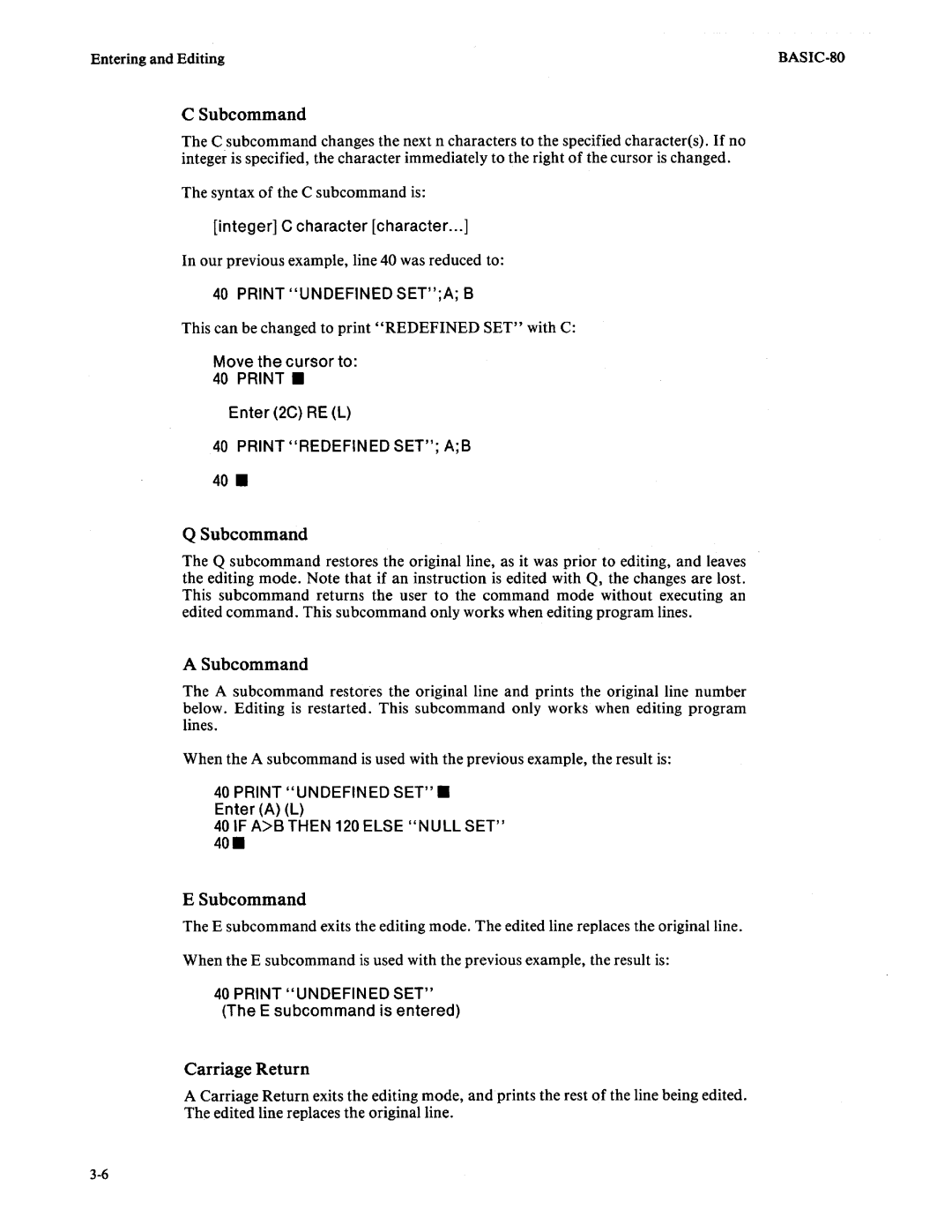
Entering and Editing |
C Subcommand
The C subcommand changes the next n characters to the specified character(s). If no integer is specified, the character immediately to the right of the cursor is changed.
The syntax of the C subcommand is:
[integer] C character [character... ]
In our previous example, line 40 was reduced to:
40 PRINT "UNDEFINED SET";A; 8
This can be changed to print "REDEFINED SET" with C:
Move the cursor to:
40PRINT. Enter (2C) RE (L)
40PRINT "REDEFINED SET"; A;8
40•
QSubcommand
The Q subcommand restores the original line, as it was prior to editing, and leaves the editing mode. Note that if an instruction is edited with Q, the changes are lost. This subcommand returns the user to the command mode without executing an edited command. This subcommand only works when editing program lines.
A Subcommand
The A subcommand restores the original line and prints the original line number below. Editing is restarted. This subcommand only works when editing program lines.
When the A subcommand is used with the previous example, the result is:
40 PRINT "UNDEFINED SET". Enter (A) (L)
40 IF A>B THEN 120 ELSE "NULL SET"
40.
E Subcommand
The E subcommand exits the editing mode. The edited line replaces the original line.
When the E subcommand is used with the previous example, the result is:
40 PRINT "UNDEFINED SET" (The E subcommand is entered)
Carriage Return
A Carriage Return exits the editing mode, and prints the rest of the line being edited. The edited line replaces the original line.
